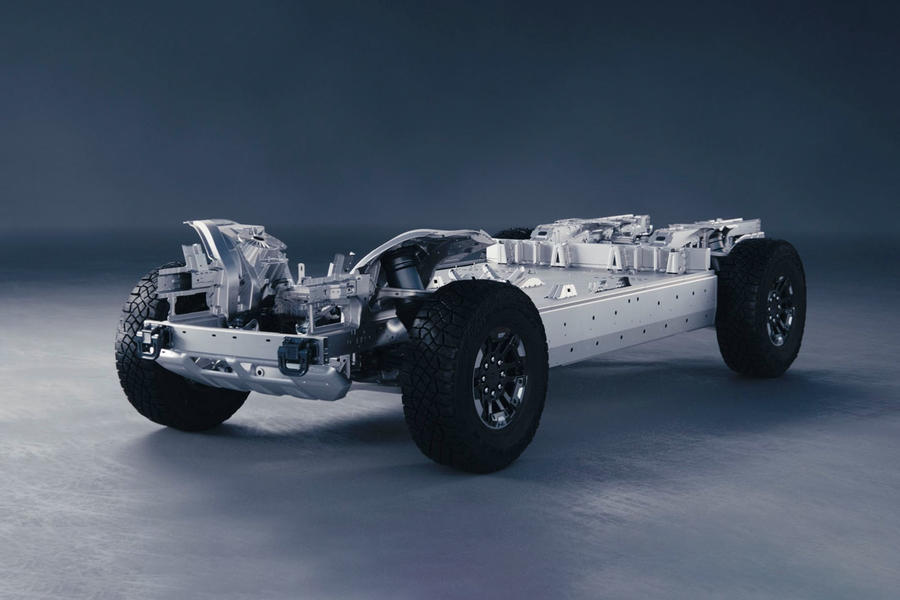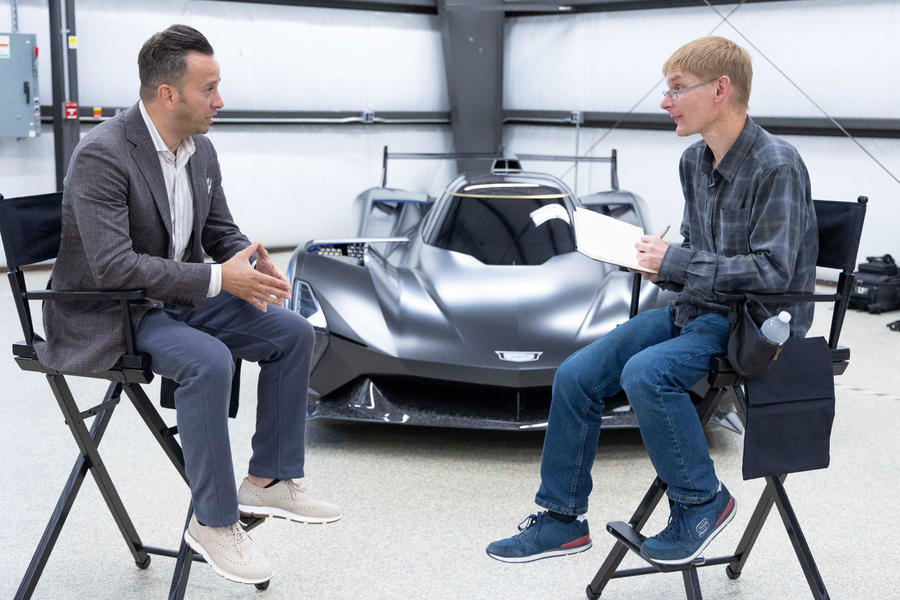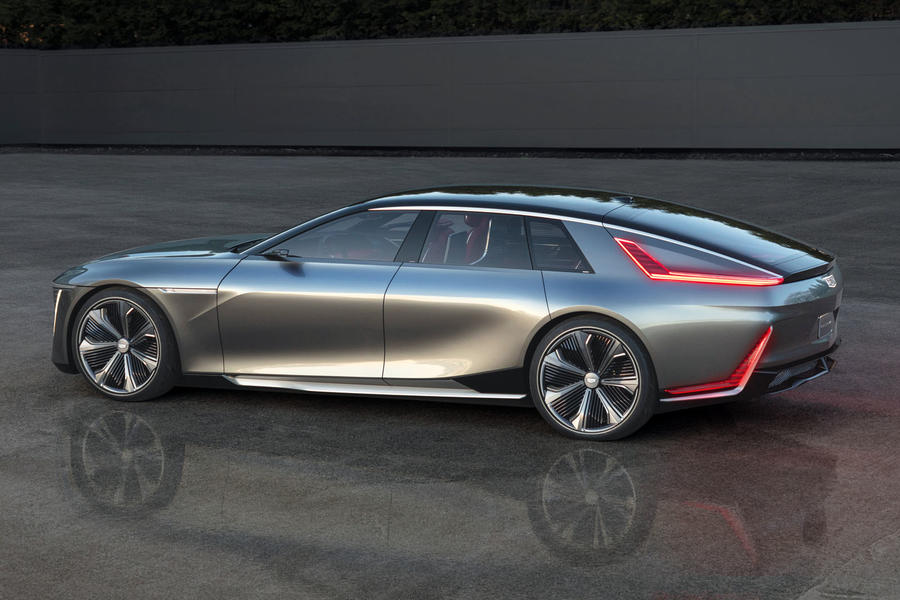GMC Hummer EV is an outlandish demonstration of GM’s technical prowess
American giant gears up to capitalise on the global switch to EVs, with a European launch inbound
The gleaming glass towers of the Renaissance Centre were erected in the 1970s as a key part of a plan to rejuvenate downtown Detroit. That similar urban renewal plans remain ongoing some 50 years later outlines the sheer scale of the challenge.
Since 1996, the rebranded GM Rencen has been the headquarters of General Motors, and the American car-making giant has much in common with the proud but faded city it calls home. Once one of the world’s automotive powerhouses, GM has struggled in recent decades, even going bankrupt during the global economic crisis.
Its market share has slipped and its global footprint has shrunk, GM most notably withdrawing from the UK and Europe with the sale of Opel and Vauxhall in 2017, an ignominy heightened when new owner PSA Group (since merged into Stellantis) rapidly delivered the sibling brands’ first profit in decades.
Nevertheless, GM firmly remains one of the world’s largest car companies, both in terms of sales and value. And, much like in Detroit itself, there’s still immense pride inside GM – and a deeply held belief that it can once again become a market-leading powerhouse.
To do that, GM must change dramatically. So boss Mary Berra has gone all in on electrification. By 2035, GM will launch only EVs – even in the US, where it ’s heavily reliant on big, hulking petrol-engined Chevrolet and GMC pick-up trucks.
GM’s transformation isn’t just about EV tech, though. There’s also investment in autonomous cars and last-mile delivery vehicles. There’s a move to foster a start-up mentality, freeing individual parts of the business to make decisions faster. There’s a focus on a handful of key brands – a marked change from when GM had a phone book of them. And there’s a planned return to Europe, including the UK. It’s a bold, ambitious plan, one that involves transforming how a 113-year-old giant operates – and convincing the world it really can beat the likes of Tesla at EVs. But can it work?
The age of Ultium

Key to GM’s pivot to EVs is building a solid platform, in the most literal sense. That ’s the Ultium architecture, which comprises a versatile skateboard chassis, an adaptable powertrain and all the underpinning software and connectivity.
It’s a clean-sheet design and intended for use in a hugely diverse range of vehicles, from the vast GMC Hummer EV and Brightdrop Zevo 600 van to the mass-market Chevrolet Blazer EV crossover and plush Cadillac Lyriq SUV. It will also be used for a range of vehicles co-developed with Honda.
But while Ultium is new, GM executives are keen to remind everyone that the firm isn’t new to EVs – despite the perception of a lumbering, ageing ICE-car giant trailing in Tesla’s wake.
“We’ve been through a learning loop,” says Shilpan Amin, head of GM International. “We were the first ones to bring EVs to market with the EV1, then we evolved that to the Chevrolet Bolt.”
That a GM senior vice-president is prepared, unprompted, to mention the EV1 is remarkable. Launched in 1996, the two-seat electric coupé was considered such a flop that when the project was controversially canned in 2002, GM infamously recalled and scrapped virtually every EV1.
Elon Musk has cited the axing of the EV1 as an inspiration for Tesla’s foundation, and there have even been wild claims that GM was working with the oil industry to kill EVs before they took hold.

In hindsight, the EV1 was simply ahead of its time, held back by high costs and poor battery tech. But some of the ideas, such as a subscription-style sales model and aerodynamically honed bodywork, are suddenly right in vogue.
The business world has changed, too: tech star tups have embraced a ‘fail fast’ ethos. Corporations are no longer ashamed to fail, so long as they learn from it. Rather than airbrush the EV1 from history, GM now wants to show how it was a pioneer.
Concepts from that car fed into the Chevrolet Spark EV hatchback that was launched in 2013 and followed in 2016 by the Chevrolet Bolt (sold in Europe as the Opel Ampera-e). While neither was a commercial smash – the Spark in particular often derided as a ‘compliance car’ for hitting emissions targets – they prove that GM can produce credible, competitive EVs. And they led directly to the Bolt EUV (a Volkswagen ID 3 rival; pictured below) and Ultium models.
“As we went through the process [of developing EVs after the EV1], we learned there was a unique opportunity to really redefine the customer experience, to take a ground-up approach to rethink how a customer and a vehicle interface,” says Amin. “Because we recognised that opportunity, we could step back and develop these platforms, which are now quickly scalable.”
![]()
GM wants to sell a million EVs annually by 2025 and has secured a supply deal with LG Chem that should provide battery material for five million.
Amin says the Ultium platform really “shows our ability to lead in technology and innovation”, and it certainly should be competitive within its class. It ’s designed primarily for mid-size SUVs and above and can accept five different Ultium Drive powertrain set-ups, with single- and dual-motor versions covering front-, rear- and four-wheel drive and outputs ranging from 235bhp to 1000bhp.
Essential to the platform are flat battery cells (GM says that this allows greater energy density than cylindrical cells), arranged into packs of 12 modules. A car could feature as few as six packs for a base model and up to 24 for a long-wheelbase one.
So far, most planned cars have 12, although the Hummer has 24 (two units of 12 atop each other). The system is natively 400V but can run at 800V in parallel, allowing charging rates of up to 350kW.
“Ultium is optimised for SUVs and crossovers, but it can grow by demand for pick-ups and even autonomous vehicles,” says Tim Grewe, director of electrification strategy. “It gives usflexibility to meet customer needs but remain agile. But the main benefit is that we can learn as we go through over-the-air updates. We can take data from it in the cloud, do off-car computing and then offer upgrades. It’s a building block for our future.”
The return to Europe

GM bought Vauxhall in 1925 and Opel in 1929, so the decision to sell them in 2017 and thereby effectively quit the European market (although it still imports a small number of Cadillac and Chevrolet Corvette models) was a seismic decision. Given the struggles that GM had faced to make the brands profitable, it appeared like a huge defeat – but the firm insists it was a tactical withdrawal.
“As regulations fragmented around the world, we had to start downscaling our business,” says Amin. “The regulation and fragmentation that was happening just didn’t allow us to be efficient in terms of capital and resources in a combustion world. We had to create unique engines and transmission combinations to meet regulations around the world.”
Essentially, there was just too much disparity between the trucks and SUVs that dominate GM’s American portfolio and the more efficient cars demanded by European drivers and regulators for the firm to share technology or economies of scale.
In addition, Opel’s and Vauxhall’s European factories weren’t geared up for EV production, and it would have been cost-prohibitive to convert them. Indeed, Stellantis’s success with Opel and Vauxhall is largely being driven by them sharing efficiencies with its many other European brands.
The electric age will be different in this respect. Amin says that the key areas that buyers are now focused on – range, charging and technology – are global concerns, and skateboard-style EV platforms allow for a far more disparate range of vehicles to share similar underpinnings.
“That’s the opportunity: we no longer have to purpose-build an entire vehicle [for Europe],” says Amin. “For applications around the world, we can scale the design and development that we have, allowing us to bring vehicles to market quicker.”
The opportunity is too big for GM to ignore. Former GM Europe boss Mahmoud Samara noted that the region “is the second-largest automotive market in the world and has a very mature yet still developing EV infrastructure”. He continued: “The public policy is in place and the EV trend is being driven by customers. With our plan to have a full electric portfolio by 2035, it’s a match made in heaven. This is a unique opportunity.”
GM is going to take a unique approach, too. At the time of Samara’s appointment in November last year, the firm said he would lead a “non-traditional start-up in Europe”. What does that mean?
“We have a clean-sheet approach,” he explained. “We don’t have any legacy to deal with, so we have the opportunity to do what’s best for the customer. We’re free to reimagine the world of mobility in a key market. It’s a once-in-a-lifetime opportunity.
“We have champions in the business right up to the CEO, but we have the autonomy to act. Ultimately, the direction is to put the customer at the centre of everything we do. So we can do what’s best for the community and planet, in terms of both products and services.”
Samara was light on specific details and is gearing up for a big European launch early next year – now led by his successor, Jaclyn McQuaid. But the broad plan is pretty clear, especially as GM has given no signal of yet investing in European production facilities. It will be EV-only, and the line-up will most likely be lifted from the firm’s existing and forthcoming EVs. Those will be selected based on suitability for Europe, so expect the Audi Q8 E-tron-rivalling Cadillac Lyriq (below) but don’t start saving up for a Chevrolet Silverado pick-up.
![]()
Intriguingly, since the interviews for this piece were conducted, former Jaguar designer Julian Thomson was named head of a new GM Advanced Design Europe studio, suggesting the company is looking into ways of at least adapting models for European tastes. But don’t expect GM to launch a new Europe-only brand.
“We have no plans on rebranding our products,” said Samara. “Chevrolet is a global brand, Cadillac is a global brand, Hummer is a global brand. We have global brands that are fit for purpose. That’s what’s so beautiful about transitioning to EVs: the flexibility that we can deliver with those platforms, it will be fit for purpose for Europe.”
How global those brands are is an interesting question. Brits might relate Cadillac more with Elvis Presley than modern EVs, and Chevrolet’s last spell in the European mainstream, as a revamp of the Daewoo budget brand, was hardly sparkling.
Whether GM will build up a dealer network or go online-only like some other new-to-Europe brands has also yet to be revealed, although Samara says it’s “committed to an omni-channel approach”.
Importantly, Samara is clear that GM doesn’t view Europe merely as a market to sell EVs in while waiting for electric adoption to pick up in the US. Noting that the European EV market is anticipated to grow sevenfold in the next decade, he says: “With the breadth and depth of our portfolio, we’re confident we will be a substantial player in the market.”
It’s a bold plan, and a hugely ambitious one. GM has pinned its future – at home and abroad – on a huge reinvention, both in the way that it operates and how it’s perceived. With the Ultium platform, it seems to have the foundation in place for a reinvention. The challenge comes in getting the public to buy into that vision. But the EV switchover presents a massive opportunity, and GM is determined to grasp it.
Cadillac’s convincing reinvention

With a name that still evokes massive, extravagant 1950s saloons, Cadillac might well be GM’s most American brand. Conversely, its modern reinvention might offer the best chance of instant success in Europe.
The new Lyriq SUV is Cadillac’s first EV – and also introduces a new design language aimed at restoring the brand to its full premium-class glory. Due out in the US next year as a rival to the Audi Q8 E-tron and the BMW iX, it seems well designed to fit firmly in that market.
The exterior maintains some familiar Cadillac design cues but also has a freshness missing from the brand’s recent indifferent saloons, while the interior has a plush feel, headlined by an enveloping 33in curved digital screen.
Our brief outing in a Lyriq at GM’s Warren Proving Ground revealed that while not the most dynamic of cars, it’s smooth and comfortable to drive. The 335bhp rear-wheel-drive powertrain (dual-motor versions will follow) deploys its power rapidly, while the ride is smooth and notably quiet. The 106kWh battery should give it a range of more than 300 miles, too.
Tipped to be GM’s European flagship, the Lyriq is related to a bold shooting brake, the Celestiq, that is due in 2024 – although this is a wholly different proposition. It’s a showcase of Cadillac’s true luxury credentials, a limited-production coachbuilt creation intended as a Bentley and Rolls-Royce rival, priced close to £250,000.
Brightdrop exemplifies start-up mentality
![]()
The best example of GM’s push to give its divisions a start-up mentality is Brightdrop, its new brand for electric last-mile delivery vehicles.
Born out of a GM innovation incubator, its senior managers are largely drawn from the tech industry. Boss Travis Katz, for instance, previously worked at Myspace and trip.com.
Brightdrop is developing a range of delivery vehicles, starting with the Zevo 600. This has all the hallmarks of a UPS or Fedex van – a large load bay with adaptable layouts, a practical, open cabin and a side-sliding driver’s door – but is built on GM’s Ultium EV platform, giving it a range of 250 miles.
Notably, the Zevo 600 was developed in just 24 months – a record for a GM vehicle that the firm says was enabled both by Brightdrop’s start-up freedom and the resources of its parent firm. Indeed, it’s heavily based on the far less practical Hummer.
Brightdrop isn’t just about vehicles, either: it will offer a whole “delivery ecosystem”. That includes the Trace Pallet, a wheeled delivery crate that has an electric motor inside, meaning it can be pushed effortlessly at speeds of up to 3mph, so Brightdrop can deliver products even where vans can’t reach.
Source: Autocar
